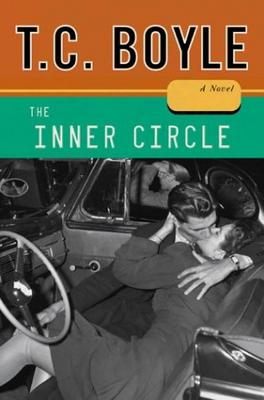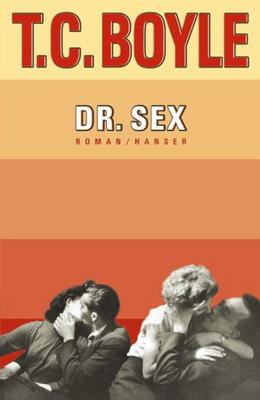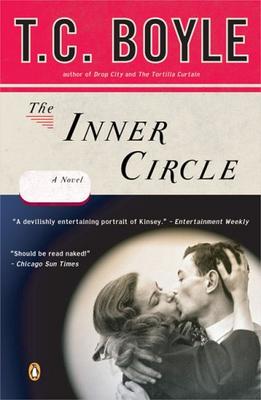The Inner Circle

Let's talk about sex.
When last year's film Kinsey was released, starring Liam Neeson, it semi-coincided with the release of T. C. Boyle's novel The Inner Circle, a fictionalized account of the historical figure Alfred Kinsey. So, unfortunately, the movie poster tagline, Let's talk about sex, and Neeson's face pervaded my experience of reading (and just recently, i.e. this morning) Boyle's book.
But in the category of distraction, I have discovered something interesting, at least to me, which is The Inner Circle, elsewhere.
Boyle's books tend to have smartly-designed covers. He's an interesting cat, as one might surmise from his photo in a previous post, which included a photo of me posing with him at a New Yorker festival signing (9/24/05). This book cover is a classic example. In fact, when I heard him read the opening section last year when the book was released, he beamed about the cover, saying it not only captured the spirit of the book, but of the sexual mores of 1940's America as well.
Anyway, thought I'd share some other covers from the same book, but published elsewhere.

 So what's in a cover? Well everything and nothing. The cover sells the book, or kills it, ask any bookseller or fan.
So what's in a cover? Well everything and nothing. The cover sells the book, or kills it, ask any bookseller or fan.
Anyway, the book received mixed reviews, but Boyle is a master storyteller and is particularly adept at writing fiction based on the lives of famous people, most notably Kellogg in The Road to Wellville. That film, which was widely panned. is still worth a curiosity viewing, although the only scene I vividly recall is that featuring the actress Bridget Fonda in a milk bath.
Back to the subject at hand, however, is The Inner Circle. Not one of his best books, but still quite enjoyable. Actually, enjoyable is not the correct word. Boyle runs on the dark side, and once we get beyond the titillating experience of John Milk, the fictionalized narrator in the historical Kinsey's inner circle, the reader is accosted with the struggle that tormented so many of Kinsey's contemporaries: sex vs. love.
Milk is married to Iris, who one critic described as the most interesting character of the book. She is not taken in by the cult of Kinsey, the blind adoration that Kinsey's assistants heaped on him. Actually, she resents him and the work he drags her husband into, taking him away from home for weeks on end, all in the name of the research.
For despite the fact that this book appears to be about Kinsey and his groundbreaking studies on human sexuality, the core of the novel is the relationship between John and Iris. Is it considered adultery if John has sex with a prostitute while Kinsey and others observe, with a scientific (if not voyeuristic) perspective? While one may admire Milk's blind allegiance to Kinsey, I was torn between liking him as a character, yet failing to comprehend how he could justify marital infidelities that were written off as "part of the job." It was in this sense that I found the novel so disturbing.
Yet disturbing does not mean bad. I would still recommend this to anyone, although I might offer up another one of Boyle's books in its stead, like The Tortilla Curtain or World's End. In fact, I'd seriously recommend reading Tortilla Curtain before the film release next year. I am almost queasy saying who is starring in it, as it may ruin it for you. But try not to let it, as I can actually see these two in the lead roles. Kevin Costner and Meg Ryan. Read the book, fast.

No comments:
Post a Comment